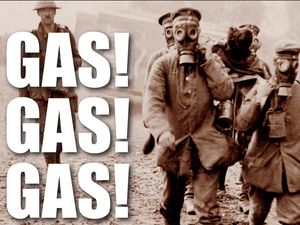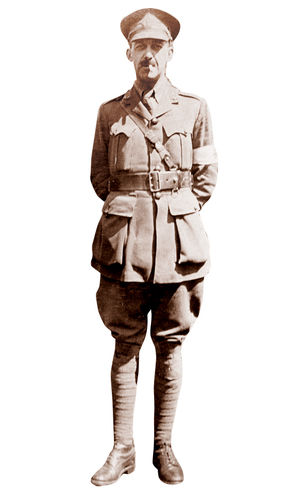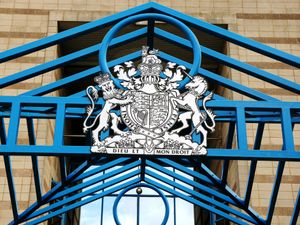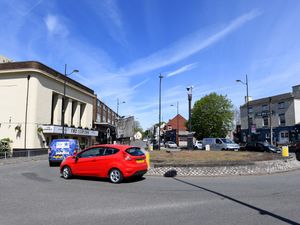How Wolverhampton doctor faced first ever gas attack in First World War
Five months into the First World War, Germany unleashed a horrifying new weapon that changed the face of warfare forever – and there to witness the horror was a doctor from Wolverhampton.

On April 22, 1915 thousands of Allied troops were smothered in a ghostly green cloud of chlorine at the Second Battle of Ypres in Belgium.
The lethal gas was used by the Germans in the hope of breaking the Western Front stalemate and the effects were devastating.
Covering four miles of trench lines, more than 10,000 men were gassed by the poison, which was released from cylinders and immediately irritated the eyes, nose, lungs, and throat of those exposed to it.
Stunned soldiers fled across Ypres and around half of them died within 10 minutes of the gas reaching the front line.
Death was caused by asphyxiation but those who lived were temporarily blinded and stumbled in confusion, coughing heavily.
From Merridale Road to Ypres
One of the first to treat the casualties was 41-year-old Lieutenant-Colonel Howard Dent – a doctor from Wolverhampton, who also worked as an assistant surgeon at Wolverhampton and Staffordshire General Hospital.
Dr Dent, who lived in Merridale Road and had his own practice in the city, was no newcomer to the frontline.
He had previously served in the Boer War and was part of the Royal Army Medical Corps.

He commanded the 1st/3rd North Midland Field Ambulance at Bailleul, about nine miles from Ypres.
In his diary, Dr Dent recalls the Allied forces’ first exposure to the deadly gas and how the men in charge of releasing the poison were seen wearing rubber suits and masks.
The medical team was confused as to exactly what damage soldiers had suffered as little was known about chlorine at the time.
He wrote: “The ‘Gas Men’ wear rubber suits and masks. During the day convoys of Canadian wounded kept coming in. I had a fair view of Ypres burning. It has been heavily shelled all day and we have evacuated it. More Canadian wounded came in. The motor (ambulance) convoy has been shelled and has had casualties. They have collected wounded from the field direct. The type of poisonous gas or liquid used by the Germans has not yet been discovered. One German officer aged 18 is wounded here. He has verified the use of poisonous gas which he says is carried in cylinders by special men, specially clothed.”
The entries have been published on the National Army Museum’s website First World War in Focus.
He also describes the scenes as gassed soldiers were brought to the hospital for treatment following the release of gas which had opened a four-mile hole in the front line.
And he recalls how the Germans also unintentionally poisoned many of their own as the changing winds caused the gas to blow back on their own positions
'I saw about 40 gassed men'
“Wounded continue to come in, mostly stretcher cases. Seventy-eight came in. Several suffering from poisonous gases – depression, poor pulse, cyanosis and bronchial irritation. One states that several have been killed by this means.
"The Germans have a special corps for this work armed in India rubber suits and respirators. At a given signal they start the gas from cylinders which is heavy greenish brown in colour and blows towards our trenches.
“I saw about 40 gassed men in No 8 Casualty Clearing Hospital. I’m told however that the wind changed during the gassing and the Germans got it in the neck,” writes Dr Dent in his diary entries from April 23-26, 1915.
Fighting raged until May 25, with more gas attacks, but the Germans did not break through.
Nearly 70,000 Allied troops and 35,000 Germans became casualties in the battle.
Dr Dent had started his service in the war in August 1914 when he was given command of 1/3 North Midland Field Ambulance, a Territorial unit raised in Wolverhampton.
He served on the Western Front until summer 1916 when his unit was sent to Ireland. He later returned to the front and commanded a variety of Field Ambulances and Casualty Clearing Stations.
After the Armistice, Dr Dent returned to his practice on Waterloo Road in Wolverhampton and later moved to Pattingham.
His youngest son Christopher was a surgeon lieutenant in the Royal Naval Volunteer Reserve. He was lost at sea in 1941 when HMS Hood was sunk by the Bismarck with the loss of more than 1,400 lives.
Dr Dent died in September 1972, aged 98, in Bridgnorth.





